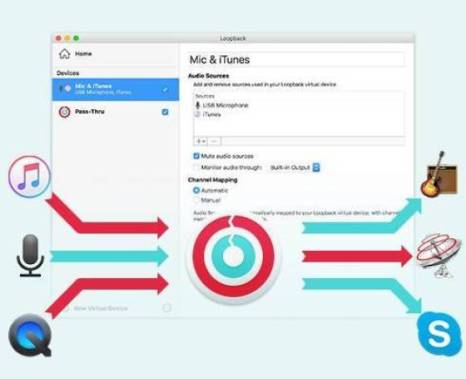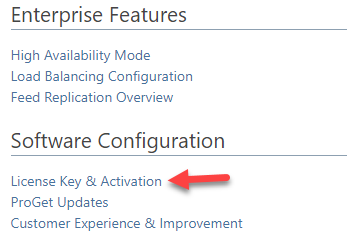

- #LOOPBACK LICENSE KEY INSTALL#
- #LOOPBACK LICENSE KEY FULL#
- #LOOPBACK LICENSE KEY SOFTWARE#
- #LOOPBACK LICENSE KEY PC#
The source port for a forwarded connection usually does not accept connections from any machine except the SSH client or server machine itself (for local and remote forwardings respectively). So, in particular, you can forward other PuTTY connections through it by setting up the Proxy control panel (see for details). This will cause PuTTY to listen on the port you have specified, and provide a SOCKS proxy service to any programs which connect to that port. The ‘Source port’ box will now specify a port number on the server (note that most servers will not allow you to use port numbers under 1024 for this purpose). To do this, just select the ‘Remote’ radio button instead of the ‘Local’ one.
#LOOPBACK LICENSE KEY PC#
(Of course, the forwarding will stop happening when your PuTTY session closes down.) You can also forward ports in the other direction: arrange for a particular port number on the server machine to be forwarded back to your PC as a connection to a service on your PC or near it. So in this example, you could then configure an e-mail client to use localhost:3110 as a POP-3 server instead of :110. It should say something like this: 17:22:10 Local port 3110 forwarding to :110 Now if you connect to the source port number on your local PC, you should find that it answers you exactly as if it were the service running on the destination machine.

(Port forwarding will not be enabled until after you have logged in otherwise it would be easy to perform completely anonymous network attacks, and gain access to anyone's virtual private network.) To check that PuTTY has set up the port forwarding correctly, you can look at the PuTTY Event Log (see ).
#LOOPBACK LICENSE KEY INSTALL#
This will probably install itself as display number 0 on your local machine if it doesn't, the manual for the X server should tell you what it does do. In order to use this feature, you will need an X display server for your Windows machine, such as Cygwin/X, X-Win32, or Exceed. Now all you need is to find out which of them you want! (See for more information.) 3.4 Using X11 forwarding in SSH The SSH protocol has the ability to securely forward X Window System applications over your encrypted SSH connection, so that you can run an application on the SSH server machine and have it put its windows up on your local machine without sending any X network traffic in the clear. If you click ‘Change Settings’ and look at the ‘Translation’ panel, you should see a large number of character sets which you can select, and other related options. There are a lot of different character sets available, so it's entirely possible for this to happen.
#LOOPBACK LICENSE KEY SOFTWARE#
A VT-series terminal is a complex piece of software and can easily get into a state where all the text printed becomes unreadable.ģ.3 Altering your character set configuration If you find that special characters (accented characters, for example, or line-drawing characters) are not being displayed correctly in your PuTTY session, it may be that PuTTY is interpreting the characters sent by the server according to the wrong character set.
#LOOPBACK LICENSE KEY FULL#
(Note that this only prevents a casual user from using the scrollbar to view the information the text is not guaranteed not to still be in PuTTY's memory.) The ‘Reset Terminal’ option causes a full reset of the terminal emulation. This might be useful, for example, if you displayed sensitive information and wanted to make sure nobody could look over your shoulder and see it. 3.1.3.6 Clearing and resetting the terminal The ‘Clear Scrollback’ option on the system menu tells PuTTY to discard all the lines of text that have been kept after they scrolled off the top of the screen.


3.1.3.5 Copy All to Clipboard This system menu option provides a convenient way to copy the whole contents of the terminal screen (up to the last nonempty line) and scrollback to the clipboard in one go. You can save the current settings to a saved session for future use from this dialog box.


 0 kommentar(er)
0 kommentar(er)
